Planning a trip to the “Island of the Gods” requires careful timing to ensure you get the experience you’re looking for. The best time to visit Bali varies depending on your priorities – whether you’re seeking perfect beach weather, cultural experiences, budget-friendly options, or simply want to avoid the crowds. This tropical paradise maintains warm temperatures year-round, but distinct seasonal patterns significantly impact your experience on this Indonesian island.
Picturesque sunsets made more dramatic by swiftly shifting clouds add to Bali’s romance.
Lawrence Blair
In this comprehensive guide, we’ll break down Bali’s seasons, analyze month-by-month conditions, and provide insider tips to help you plan the perfect Balinese getaway. We’ll assist you in choosing the best time to visit based on your travel choices, financial limitations, and preferred activities, from the busy beaches of Seminyak to the cultural center of Ubud.

Image: Bali in the dry season
I. Understanding Bali’s Climate: Tropical Paradise Year-Round
Before diving into specific recommendations, it’s important to understand Bali’s tropical climate patterns and how they affect your travel experience.
Bali’s Two Distinct Seasons: Dry and Wet
Bali experiences a tropical climate with two primary seasons that shape the island’s rhythm:
Dry Season (April to October)
The Bali dry season travel period offers the most predictable and comfortable weather conditions:
- Temperature: Warm days averaging 27-30°C (80-86°F)
- Humidity: Lower humidity levels (70-80%)
- Rainfall: Minimal precipitation with clear, sunny skies
- Ocean Conditions: Calmer seas with excellent visibility for diving and snorkeling
- Crowds: Peak tourist season, especially July-August
- Pricing: Higher rates for accommodations and activities
Wet Season (November to March)
The Bali wet season tips are essential for travelers visiting during this period:
- Temperature: Slightly warmer at 28-32°C (82-90°F)
- Humidity: Higher humidity levels (80-90%)
- Rainfall: Brief but intense afternoon downpours; mornings often remain sunny
- Ocean Conditions: Rougher seas with reduced visibility for water activities
- Crowds: Fewer tourists except during Christmas/New Year
- Pricing: Better deals and discounts available
Bali’s Microclimate Zones
It’s worth noting that Bali’s climate varies significantly across the island:
- Southern Beaches (Kuta, Seminyak, Nusa Dua): Hotter and drier
- Central Highlands (Ubud, Bedugul): Cooler temperatures and more rainfall
- Northern Coast (Lovina): Generally drier than the south during wet season
- Eastern Bali (Amed, Candidasa): Often drier than other regions

Image: Surfer walking along the sea shore at Kuta
🏄♀️ Visiting during the dry season? Make sure you’ve got reliable data with a Bali-ready eSIM — perfect for booking rides, maps, and cafe hopping.
II. Best Time to Visit Bali: Month-by-Month Breakdown
Let’s explore what each month offers to help you pinpoint the best time to visit Bali for your specific needs.
January: Green Landscapes and Fewer Crowds
- Weather: Peak of wet season with frequent rainfall (15-20 rainy days)
- Crowds: Low, except for New Year’s week
- Pricing: Discounted rates after the holiday rush
- Best For: Budget travelers, lush scenery photographers
- Highlights: Vibrant green rice terraces, fewer tourists at major attractions

Image: Vibrant green rice terraces in Bali
February: Gradually Improving Conditions
- Weather: Still wet but with decreasing rainfall (12-18 rainy days)
- Crowds: Very low, making it ideal for peaceful exploration
- Pricing: Excellent deals on accommodations
- Best For: Budget travelers, cultural experiences
- Highlights: Galungan and Kuningan festivals (if they fall in February)
March: Transition to Dry Season Begins
- Weather: Transitional month with decreasing rainfall (10-15 rainy days)
- Crowds: Beginning to increase but still manageable
- Pricing: Good value before high season rates kick in
- Best For: Balance of good weather and value
- Highlights: Nyepi (Balinese New Year) if it falls in March
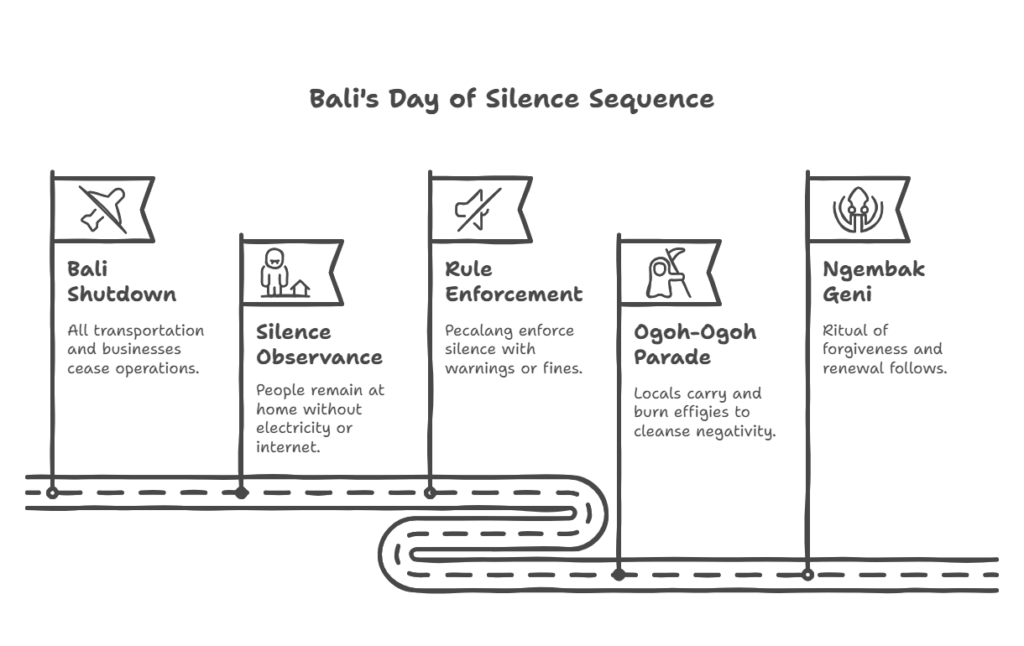
Image: Balinese Nyepi celebration with traditional Ogoh-ogoh parade
April: Excellent Shoulder Season
- Weather: Increasingly dry with occasional showers (8-12 rainy days)
- Crowds: Moderate, with a spike during Easter holidays
- Pricing: Shoulder season rates offer good value
- Best For: Outdoor activities, cultural experiences
- Highlights: Bali Spirit Festival, ideal hiking conditions
May: Perfect Balance of Weather and Crowds
- Weather: Dry and sunny with minimal rainfall (5-8 rainy days)
- Crowds: Moderate, before the peak season rush
- Pricing: Last chance for deals before high season
- Best For: Beach activities, outdoor adventures, photography
- Highlights: Ideal conditions for visiting waterfalls and rice terraces
June: Beginning of High Season
- Weather: Consistently dry and sunny (3-5 rainy days)
- Crowds: Increasing as high season begins
- Pricing: Higher rates, especially toward the end of the month
- Best For: All outdoor activities, beach time
- Highlights: Bali Arts Festival begins (mid-June to mid-July)
🏝️ Planning a trip to paradise? Don’t forget the best eSIM for Bali to stay connected while temple-hopping and beach-chilling.
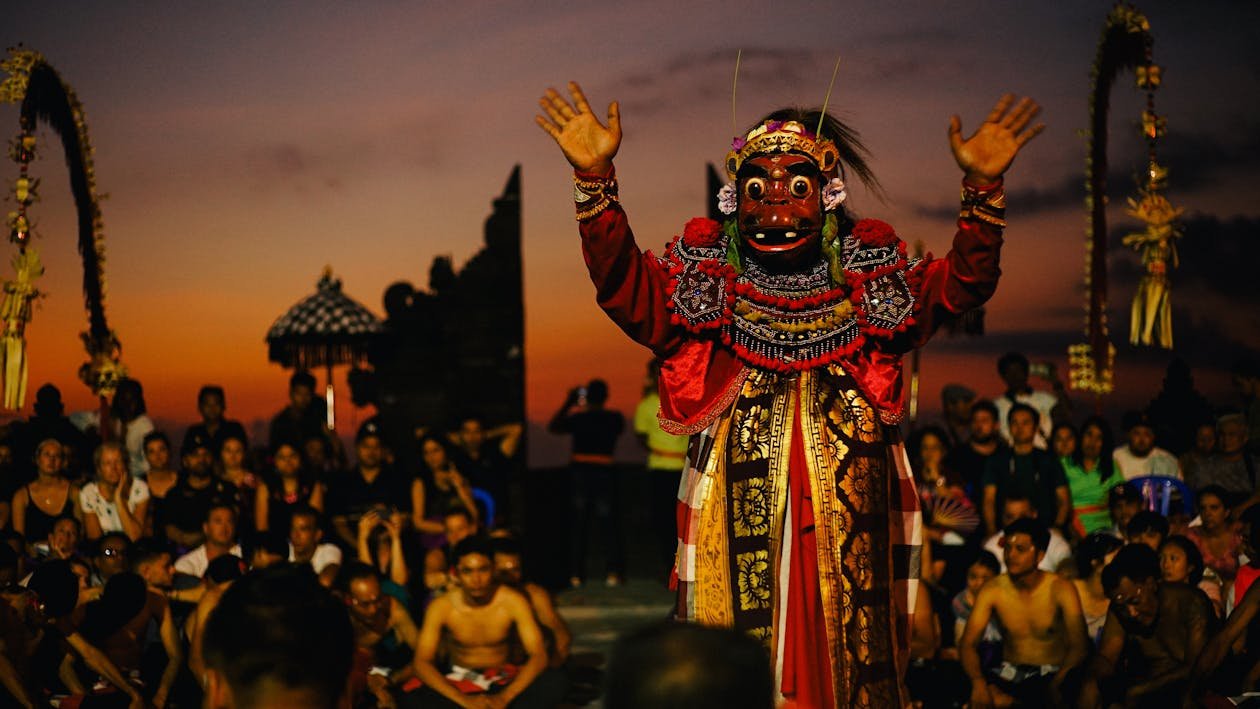
Image: Bali Arts Festival
July: Peak Tourist Season
- Weather: Dry with cool evenings (1-3 rainy days)
- Crowds: Very high due to European and Australian school holidays
- Pricing: Premium rates for accommodations
- Best For: Guaranteed good weather, surfing on the west coast
- Highlights: Bali Arts Festival continues, perfect beach conditions
August: Busiest Month of the Year
- Weather: Driest month with cool evenings (0-2 rainy days)
- Crowds: Extremely high, advance bookings essential
- Pricing: Highest prices of the year
- Best For: Surfing, diving, beach activities
- Highlights: Independence Day celebrations (August 17)
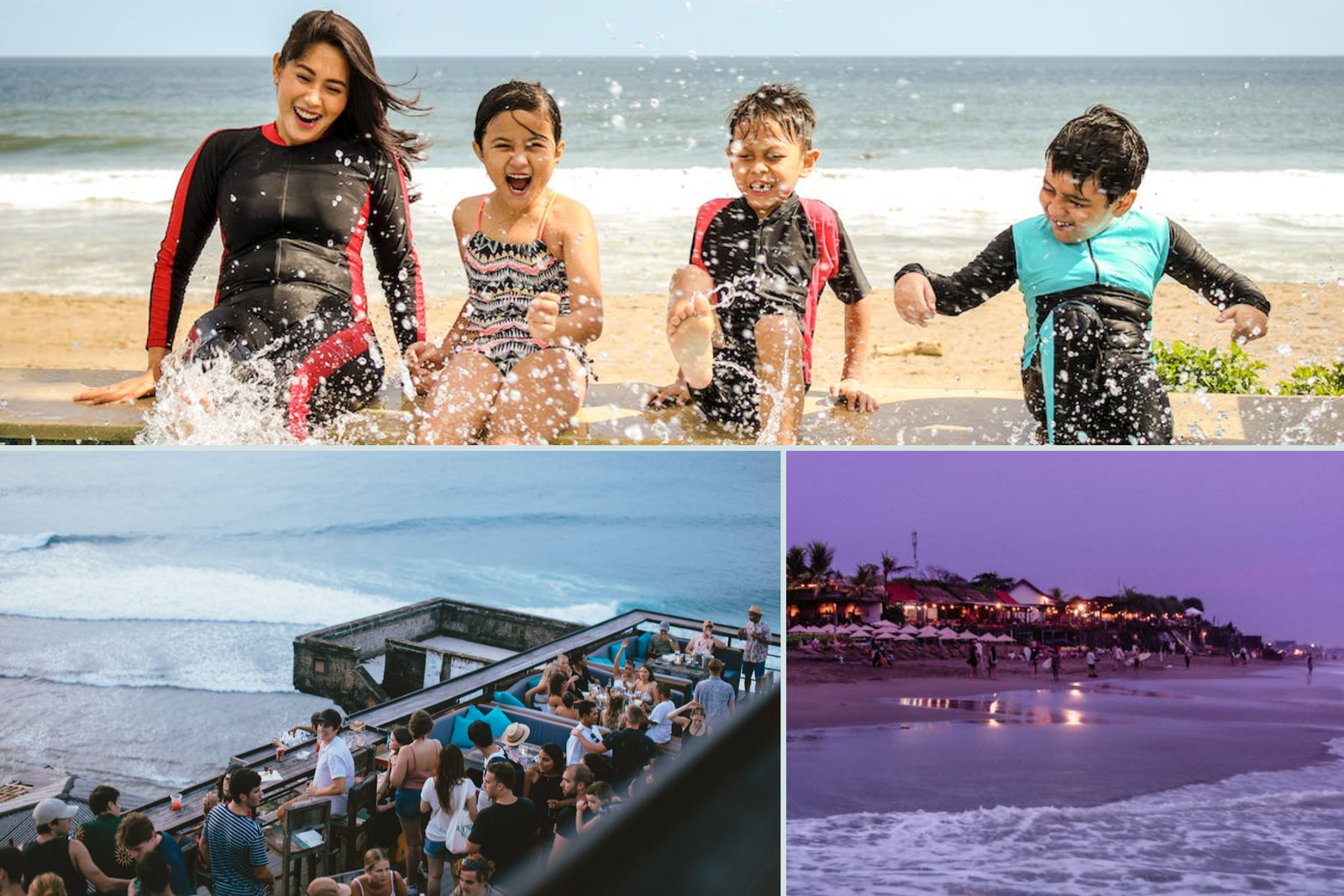
Image: Crowded beach scene in Seminyak during peak season
September: Excellent Weather with Decreasing Crowds
- Weather: Still very dry with pleasant temperatures (2-4 rainy days)
- Crowds: Decreasing after the August peak
- Pricing: Beginning to decrease from peak rates
- Best For: All outdoor activities with fewer crowds
- Highlights: Ideal conditions for temple visits and outdoor exploration
October: Last Month of Dry Season
- Weather: Mostly dry with increasing chance of rain (5-10 rainy days)
- Crowds: Moderate, good balance of space and atmosphere
- Pricing: Shoulder season rates return
- Best For: Beach activities, cultural experiences
- Highlights: Ubud Writers & Readers Festival

Image: Traditional Balinese split gate at Handara Gate in Bali
November: Transition to Wet Season
- Weather: Increasing rainfall but still many sunny days (10-15 rainy days)
- Crowds: Low except around American Thanksgiving
- Pricing: Lower rates as wet season begins
- Best For: Budget travelers, lush landscapes
- Highlights: Fewer tourists at major attractions
December: Holiday Season Amid Wet Weather
- Weather: Wet season in full swing (15-20 rainy days)
- Crowds: Low early in month, extremely high during Christmas/New Year
- Pricing: Budget rates early month, premium rates during holidays
- Best For: Cultural experiences, Christmas/New Year celebrations
- Highlights: Festive atmosphere at beach clubs and resorts
III. Regional Guide: Best Times to Visit Different Parts of Bali
Different regions of Bali offer unique experiences and may have slightly different optimal visiting times.
Ubud Best Time to Visit: Cultural Heart of Bali
The cultural and artistic center of Bali offers a different experience from the beach areas:
- Ideal Time: April-June and September-October
- Why: Less rainfall than coastal areas, comfortable temperatures, fewer crowds
- Activities: Rice terrace visits, temple tours, art galleries, yoga retreats
- Considerations: Higher elevation means slightly cooler temperatures and more rainfall

Image: Terrace Rice Plantation and Palm Trees in Bali
Seminyak Weather Conditions: Trendy Beach Resort Area
This upscale beach area is known for luxury resorts, beach clubs, and shopping:
- Ideal Time: May-September
- Why: Minimal rainfall, perfect beach conditions, vibrant nightlife
- Activities: Beach lounging, shopping, dining, sunset watching
- Considerations: Very crowded and expensive during July-August

Image: Luxury beachfront resort in Bali with infinity pool
Kuta Beach Season: Surf and Nightlife Hub
Bali’s most famous beach area caters to a younger crowd seeking surf and nightlife:
- Ideal Time: April-October for surfing, May-September for best beach conditions
- Why: Consistent surf conditions, lively atmosphere
- Activities: Surfing, beach activities, shopping, nightlife
- Considerations: Can be extremely crowded during peak season
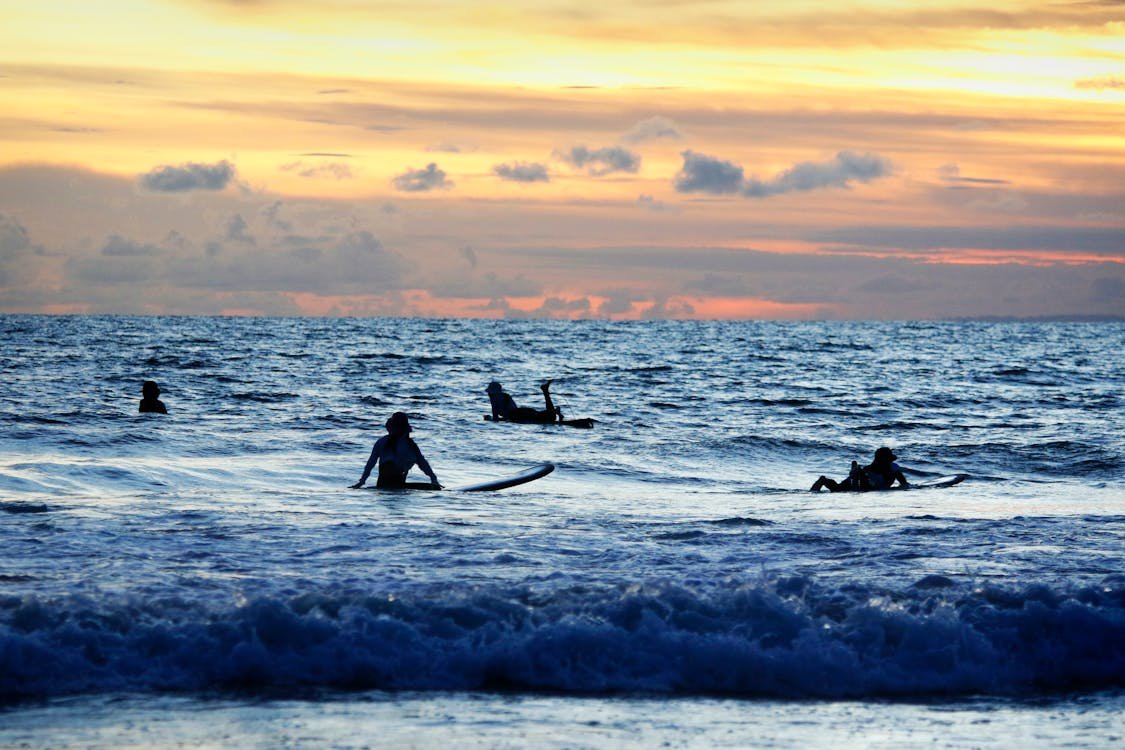
Image: Kuta Beach
Nusa Penida Visiting Months: Island Paradise
This stunning island off Bali’s coast offers dramatic landscapes and marine experiences:
- Ideal Time: April-October
- Why: Calmer seas for boat transfers, better visibility for diving
- Activities: Snorkeling, diving, cliff viewpoints, beaches
- Considerations: Limited facilities during wet season, rough seas possible
Uluwatu Surf Season: Clifftop Beauty
Famous for dramatic cliffs and world-class surf breaks:
- Ideal Time: May-October for dry weather, April-October for best surf
- Why: Consistent surf conditions, spectacular sunset views
- Activities: Surfing, beach clubs, temple visits, cliff-top dining
- Considerations: Limited rainy season activities if surf is your priority

Image: Uluwatu Surf Season
IV. Best Time to Visit Bali for Specific Activities
Your planned activities should heavily influence when you choose to visit Bali.
Bali Surfing Season: Riding the Perfect Wave
Surfing conditions vary by location and season:
- West Coast Breaks (Kuta, Seminyak, Canggu): Best April-October
- East Coast Breaks (Keramas, Nusa Dua): Best October-April
- Uluwatu & Bukit Peninsula: Best April-October
- Beginner-Friendly Time: Dry season for smaller, more manageable waves
Bali Diving Visibility: Underwater Exploration
For the clearest underwater visibility:
- Best Overall Time: April-November
- Manta Ray Season: April-October at Nusa Penida
- Mola Mola (Sunfish) Season: July-October around Nusa Penida
- Tulamben Wreck Dive: Year-round, but best visibility June-September

Image: A diving trip in Bali
Bali Rice Terrace Viewing: Emerald Landscapes
The famous rice terraces change appearance throughout the growing cycle:
- Lush Green Terraces: January-March (after wet season rains)
- Harvest Season: April-May and September-October
- Newly Planted Fields: November-December
- Photography Tip: Early morning visits avoid crowds and harsh sunlight

Image: Lush green Tegallalang rice terraces in Indonesia
Bali Temple Ceremonies: Cultural Immersion
Balinese Hindu ceremonies follow a complex calendar:
- Galungan & Kuningan: Occurs every 210 days (check calendar for dates)
- Nyepi (Balinese New Year): March/April (follows lunar calendar)
- Temple Anniversaries: Each temple celebrates its anniversary according to the Balinese calendar
- Daily Offerings: Observable year-round regardless of when you visit
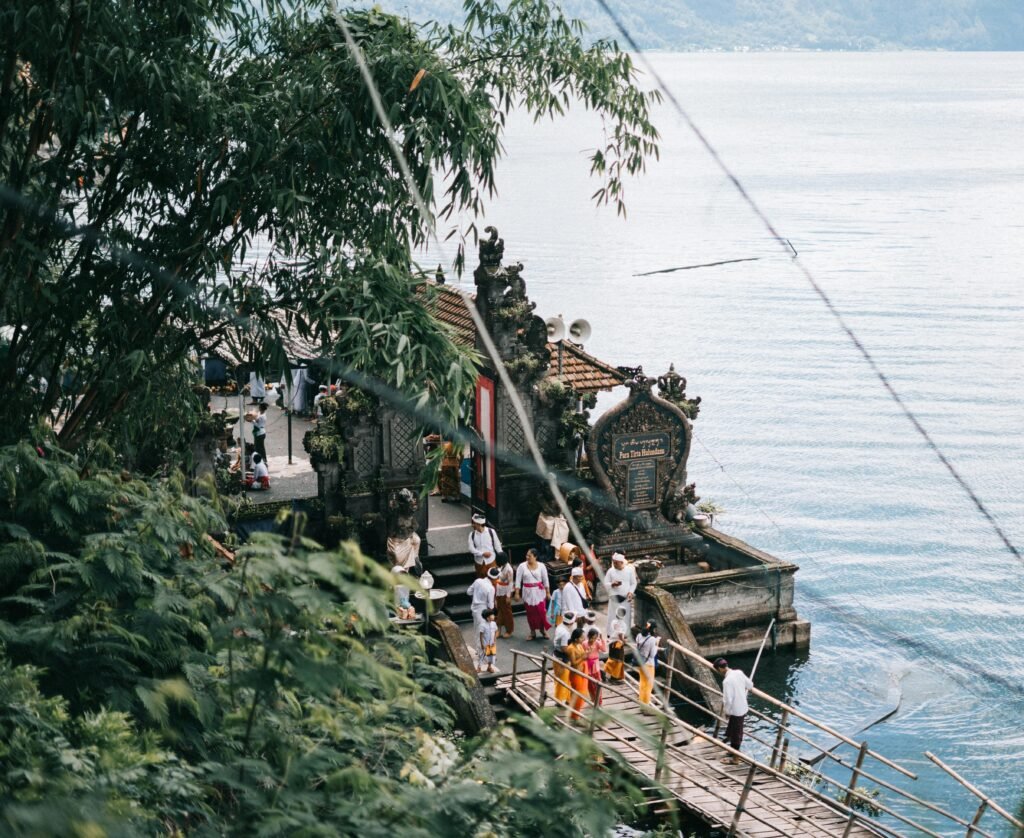
Image: Bali Temple ceremonies
🚶♀️ Starting your Southeast Asia adventure in Bali? This solo travel guide to SEA helps you plan with confidence.
V. Practical Considerations for Timing Your Bali Trip
Beyond weather and activities, several practical factors should influence your timing decision.
Bali Peak Season Crowds: When to Avoid the Masses
If crowd avoidance is your priority:
- Most Crowded: July-August, December 20-January 5
- Moderately Crowded: June, September, Easter week
- Least Crowded: February, November (except Thanksgiving), early December
- Sweet Spots: May and October offer excellent weather with fewer crowds
Budget Travel Seasons in Bali: Maximizing Value
For the budget-conscious traveler:
- Most Expensive: July-August, December 20-January 5
- Mid-Range: April-June, September-October
- Best Value: January-March, November, early December
- Accommodation Tip: Prices can drop by 30-50% during low season
Bali During Monsoon Season: Navigating the Rains
If traveling during wet season (November-March):
- Rain Patterns: Typically short, intense afternoon downpours rather than all-day rain
- Morning Activities: Plan outdoor activities for morning hours when rain is less likely
- Indoor Alternatives: Have backup plans for rainy afternoons (spa treatments, cooking classes)
- Packing Essentials: Lightweight rain jacket, waterproof phone case, quick-dry clothing

Image: Navigating the rains in Bali
Looking for more information about a Bali travel guide? Check out Where o stay in Bali!
VI. Staying Connected During Your Bali Trip
Regardless of when you visit Bali, staying connected is essential for navigation, translation, and sharing your experiences.
Connectivity Solutions with Gohub eSIM
Traditional SIM cards can be inconvenient when traveling, especially in a destination like Bali where you’ll want to share your experiences instantly. Gohub eSIM offers the perfect solution:
- Instant Activation: Get connected immediately upon arrival at Denpasar Airport
- Reliable Coverage: Stay connected throughout Bali, even in more remote areas
- Weather Updates: Check real-time weather forecasts to plan activities around rain
- Navigation: Find hidden beaches, waterfalls, and the best local restaurants
- Translation: Communicate easily with locals using translation apps
- Social Sharing: Post your Bali sunset photos instantly

Image: Screenshot of the GoHub eSIM webpage, highlighting the destination input field with “Indonesia” selected, illustrating how users can easily search for eSIM data plans.
With Gohub eSIM, you can focus on enjoying Bali’s beauty without worrying about connectivity issues or excessive roaming charges.
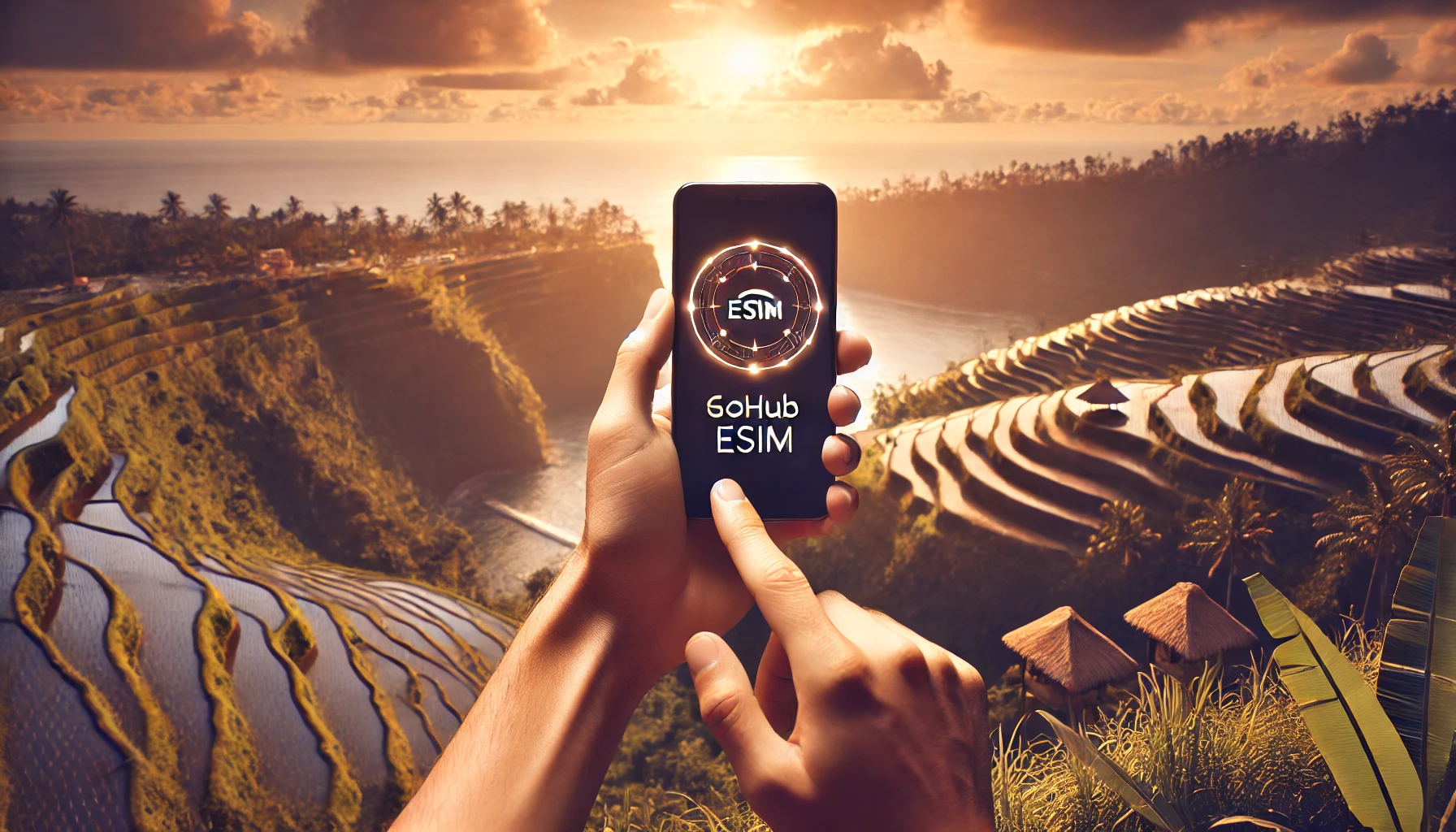
Image: Traveler using smartphone on a Bali beach
📊 Not sure how much data you’ll need in Bali? Check this guide on how much data you really need when traveling
VII. Month-by-Month Weather Breakdown for Bali
For those who want precise weather data to determine the best time to visit Bali, here’s a detailed breakdown:
| Month | Avg. Temp (°C) | Rainy Days | Humidity | Crowd Level | Price Level |
|---|---|---|---|---|---|
| January | 27-31 | 15-20 | High | Low | Low |
| February | 27-31 | 12-18 | High | Very Low | Low |
| March | 27-31 | 10-15 | High | Low | Low |
| April | 27-30 | 8-12 | Medium | Medium | Medium |
| May | 27-30 | 5-8 | Medium | Medium | Medium |
| June | 26-29 | 3-5 | Low | High | High |
| July | 26-29 | 1-3 | Low | Very High | Very High |
| August | 26-29 | 0-2 | Low | Extremely High | Very High |
| September | 26-30 | 2-4 | Low | High | High |
| October | 27-31 | 5-10 | Medium | Medium | Medium |
| November | 27-31 | 10-15 | High | Low | Low |
| December | 27-31 | 15-20 | High | Mixed | Mixed |
VIII. Tips for Avoiding Crowds in Bali
If you’re visiting during peak season but still want to minimize crowd encounters:
Timing Strategies
- Early Morning Visits: Arrive at popular attractions by 7-8 AM
- Late Afternoon Exploration: Many tour groups leave by 3-4 PM
- Meal Timing: Eat lunch early (11:30 AM) or late (2 PM) to avoid restaurant crowds
- Weekday Focus: Schedule popular attractions on weekdays rather than weekends
Alternative Destinations
- Northern Bali: Explore Lovina, Munduk, or Amed instead of southern beaches
- East Bali: Visit Sidemen Valley as an alternative to crowded Ubud
- Lesser-Known Beaches: Choose Balangan or Bingin over Kuta and Seminyak
- Hidden Waterfalls: Seek out Tibumana or Leke Leke instead of Tegenungan
🧘 First time in Bali? Explore what to do in Bali from hidden gems to must-visit spots.
IX. Conclusion: Finding Your Perfect Time to Visit Bali
The best time to visit Bali ultimately depends on your priorities, whether that’s perfect weather, budget considerations, specific activities, or avoiding crowds.
For most travelers, the shoulder seasons of May-June and September-October offer the ideal balance of good weather, reasonable prices, and manageable crowds. However, don’t discount the wet season entirely – the lush landscapes, better deals, and fewer tourists can make for a wonderful experience if you’re flexible with your activities.
Whatever time you choose to visit, Bali’s warm hospitality, stunning landscapes, and rich culture ensure a memorable experience. Just be sure to plan ahead, especially if you’re visiting during peak periods, and consider the regional variations across this diverse island paradise.
Before you embark on your Bali adventure, don’t forget to secure your Gohub eSIM for seamless connectivity throughout your journey. With reliable internet access, you’ll navigate Bali’s diverse landscapes with confidence, check weather conditions before outdoor activities, and share your magical moments with friends and family back home.

Image: Sunset at a Bali temple with traditional umbrellas
Ready to experience the magic of Bali? Get your Gohub eSIM before your trip and enjoy seamless connectivity from the moment you land. Stay connected, navigate with confidence, and share your Bali adventures with friends and family back home!








